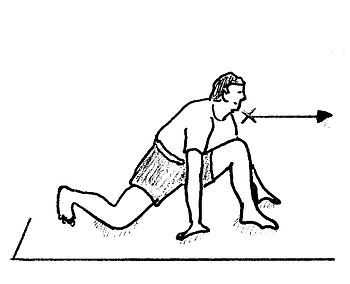It's finally lovely spring weather outside, so for the next couple of months, we're going to share some great tips and workouts for getting in shape for the summer!
Since the weather is so beautiful and it's not too hot yet, we're starting off by talking about getting started with a running program. Running is a great way to get in shape while enjoying the beautiful outdoors!
Beginning running can be a big step for some people. Not only are you committing to better health and fitness you may be committing to losing weight and finding time in your day for yourself. Once you’ve made the choice to run it’s time to choose a running program.
Types Of Running Programs For Beginners
One of the most common running programs for beginners involves interval training. Yes, the very same interval training sprinters use to increase their speed only your goal isn’t’ really to increase your speed your goal is to increase your time running. Here’s how it works.
Choose a distance or a time goal, for example thirty minutes or three miles. You can even choose one mile, it’s all up to you. Once you’ve chosen a realistic distance or time goal, break it up into manageable intervals.
For example if you’ve chosen thirty minutes, which is the minimum amount of time doctors recommend you spend on cardiovascular exercise each day, then you might decide to walk for four minutes and run for one minute. If you continue this for thirty minutes you will have walked for 24 minutes and run for six minutes. Depending on your running speed, you may run anywhere from half a mile to a mile which is a great start.


Repeat this interval training three days a week, adding one minute to your running time and subtracting one minute from your walking time. The goal being to eventually run the full thirty minutes and from there you can increase your running time or choose to work on how fast you run depending on your goals. (If you want some guidance with this,
Treadmill Trainer has some great iPod workouts to get you started.)
Another type of running program for beginners is to run as long as you can initially, assuming you’ve warmed your muscles up by walking for ten minutes, and then to walk the remainder of the time or distance.
For example once you’ve warmed up perhaps you’re able to run for five minutes leaving you twenty five minutes to walk. The next time you head out to run you’ll push it to six, seven or even eight minutes of running while walking the rest. Eventually, assuming you run about three times a week and you make sure to rest and take care not to push your body too hard, you’ll be running for a full thirty minutes.
Once you’ve reached your goal of running for a predetermined distance or time then your next goals will be to either increase your distance or speed. So for example if your first goal was to run for thirty minutes without stopping and you’re able to run two and a half miles during that time your next goal might be to run faster so you can cover three miles in the same time or you may wish to run for forty minutes at the same pace.
Creating a running program for beginners starts with deciding why you’re running and what your initial long term goal is. Once you’ve established that, your next step is to break it up into smaller manageable pieces. If you have a date by which you wish to achieve your goal, for example you want to be running for thirty minutes three times a day before swim suit season in two months, then you’ll be able to create weekly goals too. Start slow, pay attention and take good care of your body, and success is almost guaranteed.











